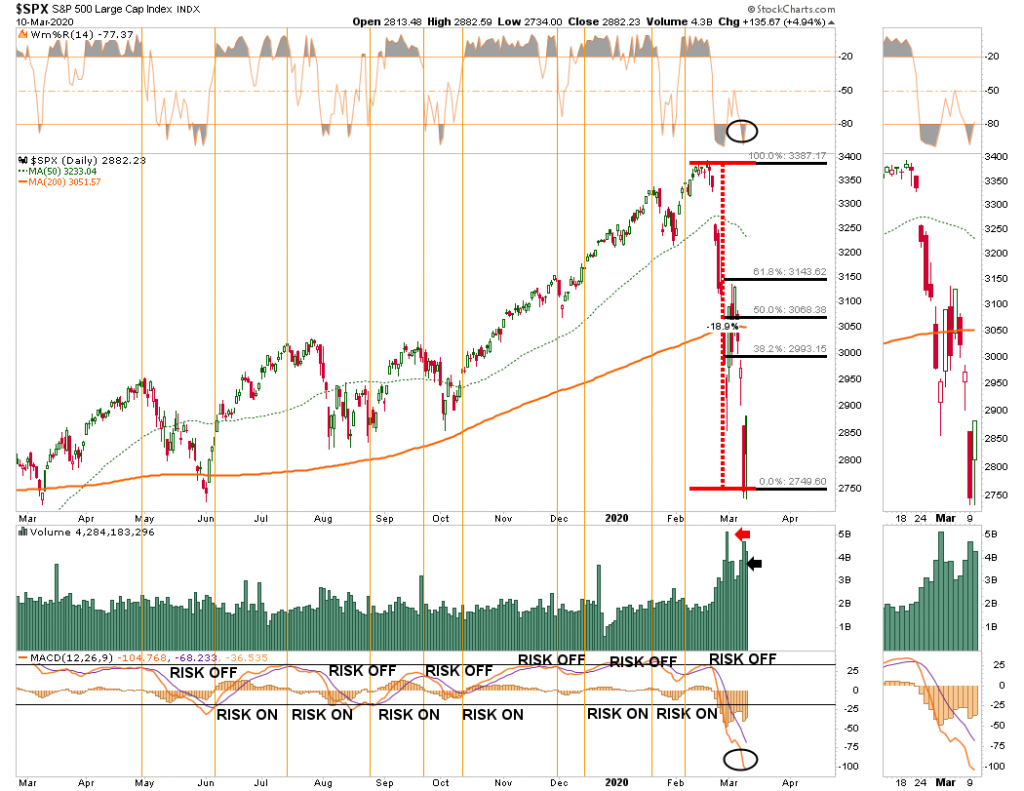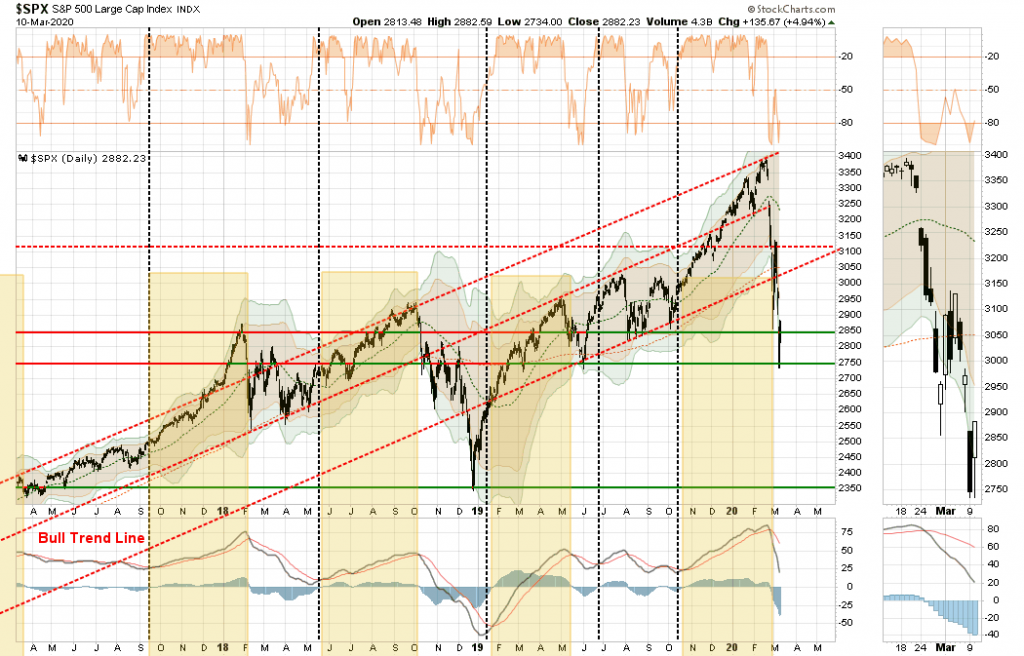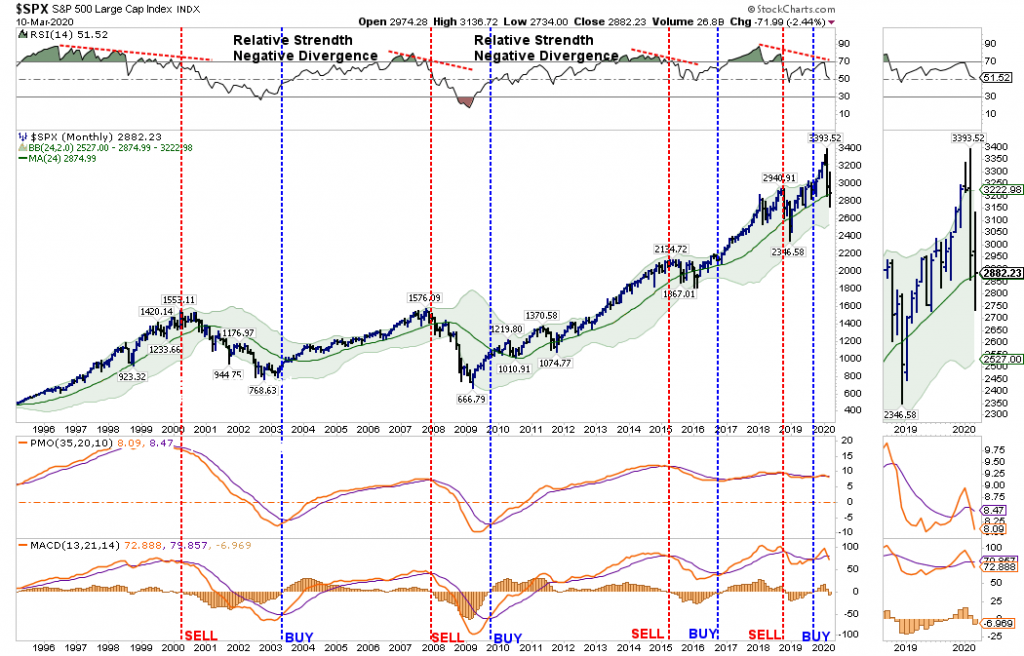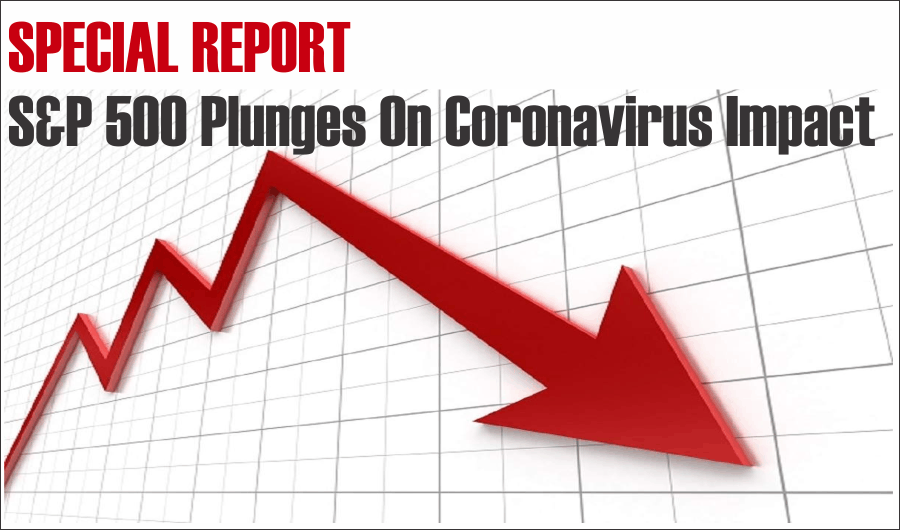Headlines from the past two days:
Dow sinks 2,000 points in worst day since 2008, S&P 500 drops more than 7%
Dow rallies more than 1,100 points in a wild session, halves losses from Monday’s sell-off
Actually its been a heck of a couple of weeks for the market with daily point swings running 1000, or more, points in either direction.
However, given Tuesday’s huge rally, is the market’s recent rout over with the bulls set to take charge? Or is this just a reflexive rally, with a retest of lows set to come?
Let’s take a look at charts to see what we can determine.
Daily
On a daily basis, the market is back to oversold. Historically, this condition has been sufficient for a bounce. Given that the oversold condition (top panel) is combined with a very deep “sell signal” in the bottom panel, it suggested a fairly vicious reflexive rally was likely. The question, of course is how far could this rally go.

Looking at the chart above, it is quite possible we could well see a rally back to the 32.8%, or even the 50% retracement level which is where the 200-dma currently resides. A rally to that level will likely reverse much of the current oversold condition and set the market up for a retest of the lows.
This idea of a stronger reflexive rally is also supported by the deep deviation from the 200-dma. If we rework the analysis a bit, the 3-standard deviation discussed previously has now reverted to 2-standard deviations below the 200-dma. The market found support there, and with the deep oversold condition it again suggests a rally to the 200-dma is likely.

Given that rally could be sharp, it will likely be a good opportunity to reduce risk as the impact from the collapse in oil prices and the shutdown of the global supply chain has not been fully factored in as of yet.
The following chart is a longer-term analysis of the market and is the format we use for “onboarding” our clients into their allocation models. (Vertical black lines are buy periods)
The triggering of the “sell signals” suggests we are likely in a larger correction process. With the “bull trend” line now broken, a rally back to toward the 200-dma, which is coincident with the bull trend line, will likely be an area to take profits and reduce risk accordingly.

The analysis becomes more concerning as we view other time frames.
Weekly
On a weekly basis, the rising trend from the 2016 lows is clear. The market has NOW VIOLATED that trend, which suggests maintaining some allocation to cash in portfolios currently. With the two longer-term sell signals, bottom panels, now triggered, it suggests that whatever rally may ensue short-term will likely fail.

The market is getting oversold on a weekly basis which does suggest a counter-trend rally is likely. However, as stated, short-term rallies should likely be sold into, and portfolios hedged, until the correction process is complete.
With all of our longer-term weekly “sell signals” now triggered from fairly high levels, it suggests the current selloff is much like what we saw in 2015-2016. (Noted in chart above as well.) In other words, we will see a rally, a failure to lower lows, before the ultimate bottom is put in.

Monthly
The idea of a lower bottom is also supported by the monthly data.
On a monthly basis, sell signals have also been triggered. HOWEVER, these signals must remain through the end of the month to be valid. These monthly signals are “important,” and one of the biggest concerns, as noted in the top panel, is the “negative divergence” of relative strength which was only seen prior to the start of the previous two bear markets, and the 2015-2016 slog. Again, the current sell-off resembles what we saw in late 2015, but there is a risk of this developing into a recessionary bear market later this summer. Caution is advised.

What We Are Thinking
Since January we have been taking profits in positions, rebalancing portfolio risks, and recently moving out of areas subject to slower economic growth, a supply-chain shut down, and the collapse in energy prices. (We have no holdings in international, emerging markets, small-cap, mid-cap, financial or energy currently.)
We are looking for a rally that can hold for more than one day to add some trading exposure for a move back to initial resistance levels where we will once again remove those trades and add short-hedges to the portfolio.
We highly suspect that we have seen the highs for the year, so we will likely move more into a trading environment in portfolios to add some returns while we maintain our longer-term holdings and hedges.
Given we are longer-term investors, we like the companies we own from a fundamental perspective and will continue to take profits and resize positions as we adjust market exposure accordingly. The biggest challenge coming is what to do with our bond exposures now that rates have gotten so low OUTSIDE of a recession.
We will keep you updated accordingly.


